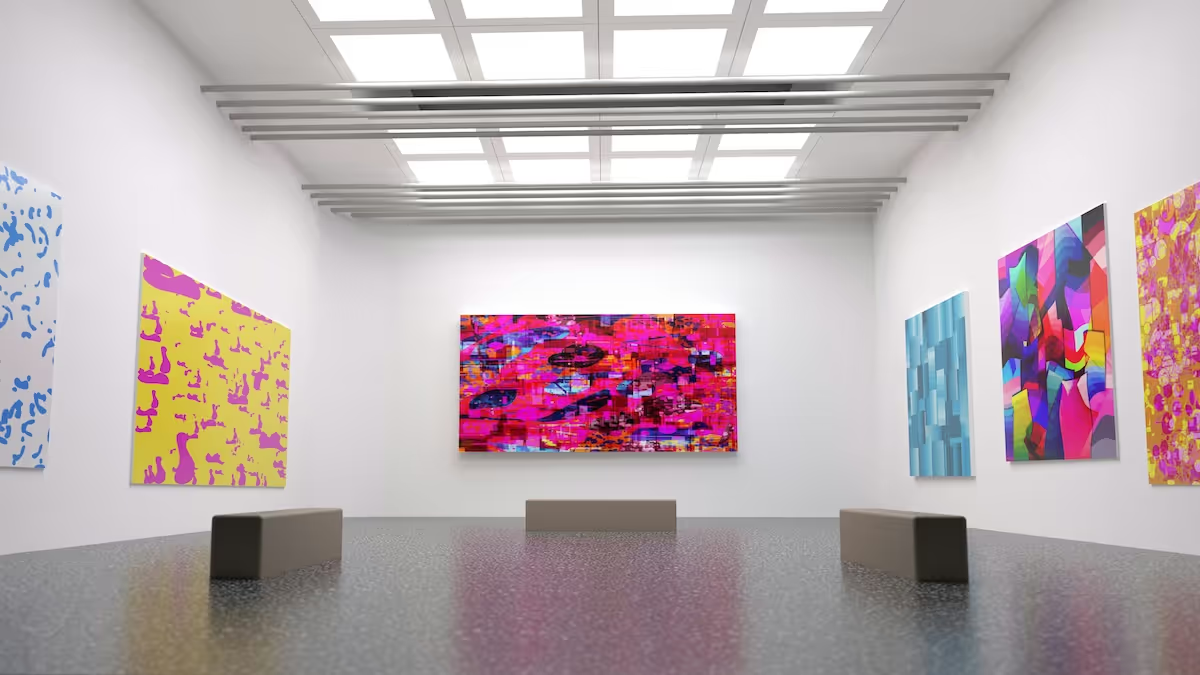Art market: Half-year results 2024 show opportunities for investors

Fear of heights: yes, shopping voids: no. This is how you could describe the development on the international art market in the first half of 2024. Some investors are reluctant in view of the already sharp rise in price levels - especially for blue chip types. But there are exciting new trends and impulses for the very attractive Fine Art portfolio addition. Find out which influences are currently shaping the art market.
“Shortage of materials” depresses auction results
Of course, the prevailing economic and political uncertainty factors do not pass by without a trace on the art market either. In addition, many top international auctions have a glaring lack of materials, compared with the collections that were sold out in New York alone in 2023. In other words, there simply wasn't enough high-priced art that could be auctioned off. In addition, the major auction houses Sotheby's, Christie's and Phillips in particular are increasingly processing high-profile transactions via so-called private sales, which do not appear in public statistics.
For the reasons mentioned above, experts expect auction results for 2024 as a whole that are likely to be below the previous year's level. The current “Art Market Report” by Clare McAndrew for Art Basel and UBS 2024 It predicts that global art market turnover will fall to 65 billion dollars, four percent less than in the previous year. According to the survey, art dealers do not expect an increase, but they are of the opinion that trade fair sales will remain stable.
However, according to the report, 77% of wealthy collectors expect the art market to perform positively. Particularly in markets such as China, Japan, Brazil and Italy, there is increased interest in buying art. This suggests that art continues to be viewed as a stable investment, particularly in uncertain times.
Top artists remain expensive
For example, the current auction results are promising. To date (as of August 2024), the art market has achieved some remarkable record sales, which illustrate the appeal of historic masterpieces and modern works of art. Some of the most expensive paintings sold this year, are:
- Jean-Michel Basquiat's “Untitled (Elmar)” (1982): This work fetched a price of 46.5 million dollars at a Phillips auction in New York, confirming Basquiat's continued influence and appreciation in the art market.
- Andy Warhol's “Flowers” (1964) - Warhol's iconic work was auctioned off at Christie's in New York for 35.5 million dollars, which represents the unbroken Popularity of Warhol's work underlined among art collectors.
- Claude Monet's “Meules at Giverny” (1893): This impressionist masterpiece by Monet fetched 34.8 million dollars at Sotheby's in New York, underlining the timeless significance of his work.
- Vincent van Gogh's “Coin de jardin avec papillons” (1883): Van Gogh's depiction of a lush garden scene sold for 33 million dollars at Christie's and shows the enduring fascination with his art.
- Leonora Carrington's “Les Distractions de Scrooge” (1945): Carrington's surrealist work fetched 28.5 million dollars at Sotheby's and marks an important moment for the recognition of female artists in the upper price range of the art market.
The wide range of the 2024 market, from Impressionism and Post-Impressionism to Abstract Expressionism and Contemporary Art, reflects the rich spectrum of art history itself. But young talents of the present day are also playing an increasingly important role for art investors and lovers.
Emerging Artists: Investing in the Future
On the New York “Frieze” This year, for example, primarily works in the six-figure range and works by aspiring artists were sold. The reported sales at the fair were topped by well-known works such as Doris Salcedo's “Disremembered XIV” (2014), which sold for one million dollars. Other notable transactions at Frieze New York included a painting by Ed Clark for 850,000 dollars and a stainless steel work by Tony Cragg for 776,610 dollars. But the fair is also a stage for emerging artists such as the video artist and painter Christine Brache, sculptor Kay Kasparhauser or multimedia artist Chris Lloyd.
How private investors “embellish” their portfolio with art
Whether it's blue-chip art or works of up-and-coming talent, art is an attractive addition to the portfolio — even for private investors. This is because art is a tangible asset with intrinsic value that can offer attractive return opportunities.
For example, the Contemporary art market surpassed S&P 500 performance, and could gain further momentum as inflation falls. The IMF estimates that overall global inflation is likely to fall to 4.6% by 2025, well below the level of almost 9% in 2022. These factors can help to strengthen buyers' and sellers' confidence in the art market and also relieve pressure from rising costs, which were among the biggest opponents of the art trade in 2023.
Of course, investing in art also involves risks, such as liquidity ties, fluctuations in the art market and the costs associated with buying and storing works of art. But Platforms such as FINEXITY, which bring blue-chip art and works by emerging artists to market in the form of digital shares, provide private investors with low-threshold access to the art market. This is because investors can buy shares in “their” work of art for as little as 500 euros, which can be traded freely and flexibly - and offer return opportunities through the increase in value.



